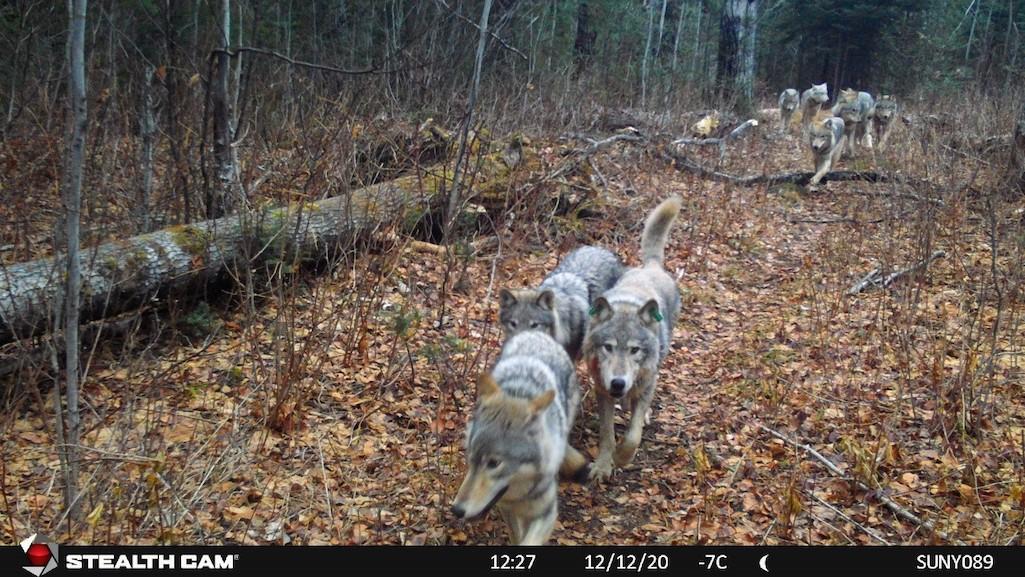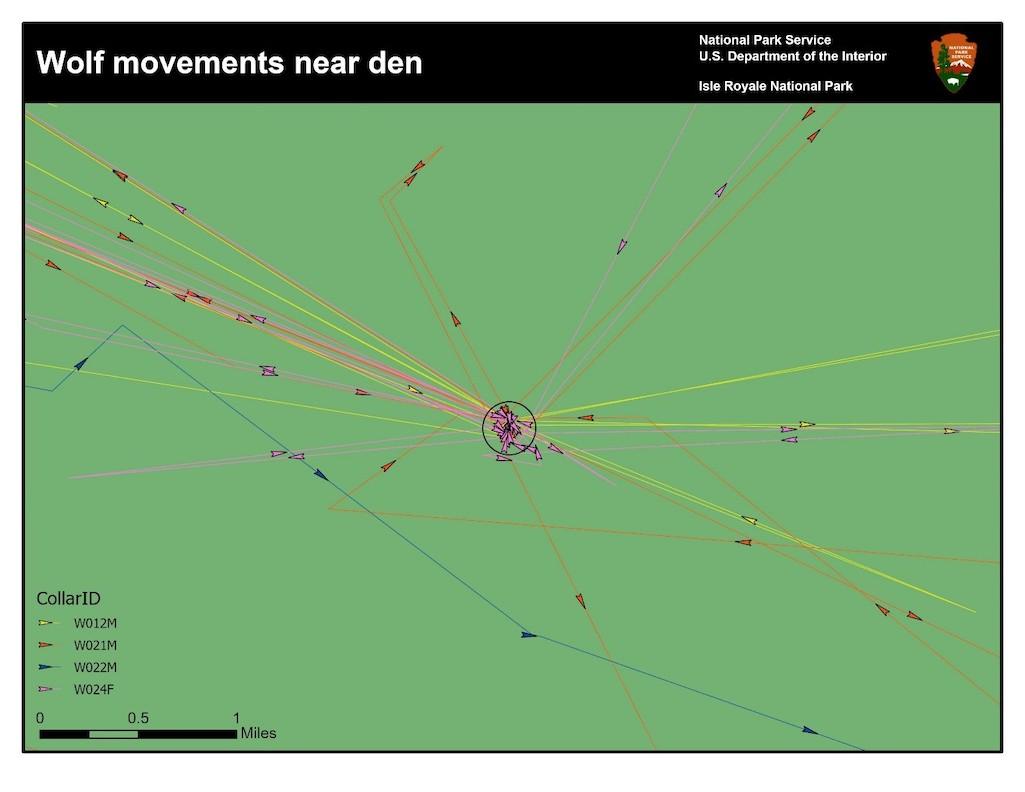
The pack that W012M belongs to included nine wolves on 12 December 2020
Wolves transplanted to Isle Royale National Park in a bid to establish a healthy prey-predator ratio appear to be settling in and adding members to their packs, according to recent field work, with at least four individuals believed to have been born on the island since 2020.
The new members were captured in late April and early May during work to attach GPS radio collars so researchers could track the wolves' movements across the Lake Superior island in northern Michigan.
The captures included a translocated male wolf originally caught on Michipicoten Island, Ontario (W012M) and three males and a female, all presumed to be born on Isle Royale in 2020, a park release said. The capture of the four unmarked wolves further demonstrates reproduction and survival, important metrics for this restoration effort, it added.
“As batteries wear out on the GPS collars on wolves originally translocated to Isle Royale, we lose their signal. The capture of wolves this spring was critical for us to continue our long-term monitoring of this population, in part by placing new collars,” said Jerrold Belant from the State University of New York College of Environmental Science and Forestry. “Characterizing the activities of individual wolves in relation to pack formation, reproduction, and survival will greatly improve our ability to measure the success of this effort.”
Genetic Rescue
Under a plan adopted by the National Park Service in 2018, the agency worked to bring up to 30 wolves to Isle Royale over a three-year period in a bid to insert some genetic diversity into the island's gene pool with hopes of establishing a larger, genetically healthier wolf population that could reduce the park's burgeoning moose numbers.
Chronic inbreeding long impacted the health of Isle Royale's wolf population. There was hope that "ice bridges" that formed between the Lake Superior island and the Canadian mainland during the winter of 2013-14 would enable wolves to arrive from Canada with new genes. But no new wolves reached the island, while one female left and was killed by a gunshot wound in February 2014 near Grand Portage National Monument.
Earlier this year researchers reported that too little food and too many ticks were adversely impacting the park's moose population. Michigan Tech researchers found that "most balsam fir saplings had been browsed so severely that they had either been killed or left with only a few green branches at the west end of the island. Researchers also found the bodies of 13 moose, when in a regular year they would typically find only one to two starved moose."

Movements of four collared wolves on Isle Royale during June 2021 and probable den site (black circle). Arrows indicate direction of wolf travel to and from den site./NPS
W012M, Alpha Male?
When captured on Michipicoten Island in March of 2019, wolf W012M was estimated to be two to four years old. This wolf was in good condition in early May of this year and is now estimated to be 4 to 6 years of age, the park release said. Caught in the same area where three of the unmarked wolves, two males and a female were captured; wolf W012M is presumed to be the breeding male of this pack pending confirmation from genetic analyses. The other wolf, a young male, was captured in a different area of the park, the release added.
Isle Royale biologists and research partners from SUNY ESF will use GPS data from these wolves to identify “clusters” of locations where wolves spend extended periods of time. These data will be used to distinguish predation, rendezvous, rest, and den site locations. This location information also is expected to allow researchers to quantify reproduction and recruitment of the population.
Identifying a den site provides researchers with an opportunity to visit the location after wolves have moved on. At the site, researchers collect scat that will provide genetic evidence on the potential number of pups born there, as well as the ability to determine parentage and packmates. Continued scat collection at rendezvous sites, and repeated systematic searches for scat on the park’s trails, allows researchers to follow individual wolves through time and further estimate survival and reproduction.
“The ability to document reproduction and recruitment is essential for evaluating the restoration program’s success, and GPS collars are one of the most important tools in our toolbox,” said Mark Romanski, NPS biologist and project coordinator.
The Park Service and its collaborators will continue to monitor Isle Royale's wolves and document ecosystem changes as they settle into the island environment.



Comments
Thank you for introducing new wolves on the island. Isle Royale wolf population can return to "normal wild levels".
The starving moose will not overpopulate and be able to survive as well!